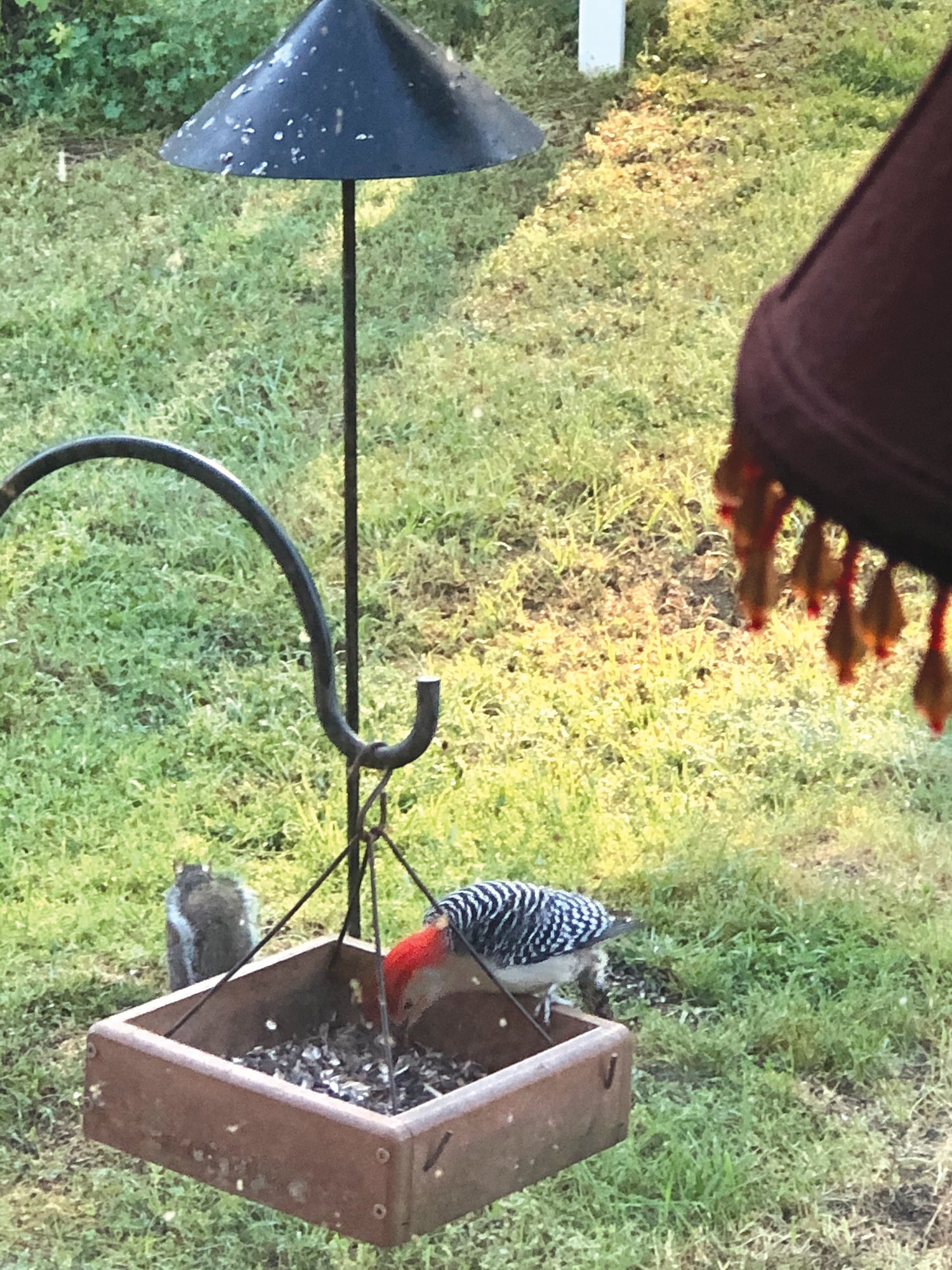Our backyard visitors
Sparrows eat on a tube feeder, including one with a white head.
Outdoor contributor
They come for the food and are a constant delight. We get a variety of types. Some are regulars, and some are more seasonal. They are all welcome.
I'll start with the red ones. They are the most numerous. We've had as many as 18 in our backyard garden at one time. The male Cardinals are firetruck red, and the females are a mix of reds and tans. They fly in from the woods behind our house. They come for the sunflower seed in our feeders. They will pick up a single sunflower seed and chew the husk off, then swallow the seed. Then get another one.
We have two tray-type feeders with wire bottoms. I usually put a nut and fruit mix in those feeders. The red birds will use any of the feeders, but they prefer the more open tray type. All the birds will use the tray feeders, but the smaller birds prefer the tube feeder or a smaller jar-type feeder.
Another red type that we get are the House Finches. The males have a varying amount of red on the head, chest and sides. The females are a mix of browns. They use any of the feeders and prefer the millet and other small seed.
The most beautiful bird that we get has a bright red chest and belly. It is the Painted Bunting. They are the most colorful with a blue head and a yellow and green back. The small females are lizard green. They are seasonal visitors. The first ones show up at our feeders in mid-April. They stay until late summer and are gone before winter. Their winter home is Central and South America.
In the winter, we get Red-winged Blackbirds. The brilliant red patch on the wing is bordered by a tawny yellow strip. The red patch can not be seen when the birds are standing with their wings folded. Only the yellow strip is visible against their jet-black bodies. Brown-headed cow birds are with us year 'round. They are shiny black with rusty brown heads.
The nut-and-fruit mix attracts the Red-Bellied Woodpeckers. They only eat the peanuts in the mix. They will pick up and swallow three or four peanuts, then take one and fly back to the woods. Their name is a little odd to me. They have a very small, dull red patch on the belly, but the top of the male's head is a brilliant red cap. The females have a smaller red cap.
There are some blue-type birds. The Blue Jay is my favorite. It is slightly larger than the others. The blue body is accented with a variety of black and white markings. They come for the peanuts, eating several, then taking one back to the woods with them.
Blue Grosbeaks come to the feeders in the summer. They are not regular visitors. They are sized between the sparrows and the red birds. They are solid blue with black facial markings and dull brown wings. The Indigo Buntings are smaller and rarer at our feeders. They are electric blue. They shine and glitter with iridescent color. They only eat the small millet seeds.
Eastern Bluebirds visit our garden but do not use the feeders. They are insect eaters. We have a bluebird house on our garden fence that is used by the bluebirds every year.
The gray birds include Mourning Doves. They land on the feeders and walk around on the ground under the feeders picking up spilled seed. They are surprisingly aggressive toward the other birds. I've also had a few White-Winged Doves at my feeders. They are native to the Southwest and Mexico and are considered vagrants here.
Another gray bird that we get is the Tufted Titmouse. They prefer the nut-and-fruit mix. They will pick up a peanut and hold it with one or both feet and chip away at it with their beak until they break off a piece small enough to eat. The Carolina Chickadee is another small gray bird with a black throat and a black cap. We get many at our feeders. They are somewhat noisy.
We get a variety of sparrows that are cloaked in browns and grays. One small sparrow that has been at our feeders for several years has a mostly white head.
There are many other species that only come occasionally, and we are delighted to see them at our feeders and in our backyard garden. They come from the woods out back and the fields in the front and are always welcome visitors.
Reach Dan Geddings at cdgeddings@gmail.com.
More Articles to Read


